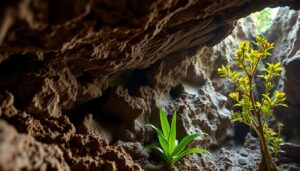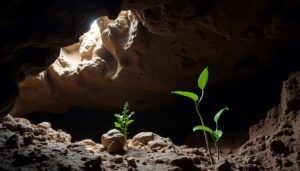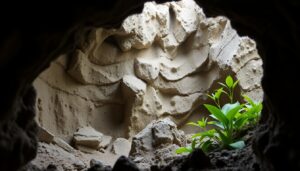Belize, renowned for its breathtaking coral reefs and ancient Maya ruins, harbors an astonishing variety of archaeological and ecological wonders beneath the earth. The expansive limestone cave systems have captivated researchers and adventurers for centuries, providing invaluable insights into the ancient Maya ritual practices, extensive climate records, and unique subterranean ecosystems. Recent scientific explorations within the caves of Belize have led to extraordinary discoveries that not only enhance our comprehension of the Maya civilization but also shed light on historical climate fluctuations and the existence of rare, previously unrecognized cave-dwelling species.

1. Explore the Rich and Mysterious History of Maya Rituals Discovered in Belizean Caves
The captivating cave systems of Belize, including the renowned Actun Tunichil Muknal (ATM Cave), Barton Creek Cave, and Cara Blanca Caves, have unearthed some of the most fascinating archaeological evidence related to Maya sacrificial and ceremonial customs. These sacred caves were viewed as portals to the Maya underworld, referred to as Xibalba. Recent archaeological findings have significantly deepened our understanding of their vital spiritual and societal roles, revealing layers of complexity that had been previously overlooked by scholars and researchers.
1.1 The Surprising Identity Revelation of the “Crystal Maiden”
The famous calcified skeleton, widely recognized as the Crystal Maiden, discovered within ATM Cave, has historically been classified as the remains of a female sacrifice. However, recent forensic evaluations have prompted a reexamination of this long-held belief. Advanced isotopic and morphological analyses suggest that these remains are more likely to belong to a young male. This crucial re-evaluation urges scholars to reconsider the social and religious dynamics that shaped human sacrifices in Maya ritual practices, especially during periods of environmental distress, such as the severe droughts documented around the 9th century CE.
1.2 Discovering New Contexts for Intricate Maya Ritual Practices
Excavation endeavors in Barton Creek and Cara Blanca have unveiled previously unrecorded ceremonial chambers, complete with intact pottery collections and human remains, including both infants and adults. The discovery of “kill holes” punctured through ceramic vessels indicates that ritualistic ceremonies focused on “spirit release” were commonly conducted within these hallowed caves. These revelations suggest that Maya cave rituals were not only more complex but also practiced more widely across various regions than previously assumed, reflecting a rich tapestry of cultural traditions and beliefs.
1.3 The Intersection of Maya Cave Rituals and Archaeoastronomy
Recent investigations have revealed alignments of cave altars and hieroglyphic inscriptions that correspond with significant solar events, including equinoxes and solstices. By utilizing laser scanning and photogrammetry techniques, researchers have confirmed that beams of natural light penetrate deeply into certain caves on sacred dates, illuminating key points designated for ritual activities. This compelling evidence supports the theory that Maya priests utilized caves not only as sites of spiritual significance but also as astronomical observatories, intricately intertwined with their calendrical systems and ceremonial practices.
2. Reveal Essential Paleoclimate Insights Using Cave Stalagmites in Belize
Thorough analysis of various stalagmites from notable caves such as Caves Branch and Actun Halal has enabled scientists to date and investigate stable oxygen and carbon isotopes, providing detailed records of paleoclimate. The stratified formations of these mineral deposits create annual chronologies of humidity and rainfall, which correlate strongly with archaeological evidence of societal shifts and the eventual decline of the Maya civilization around 900 CE. These discoveries unveil critical climate changes that profoundly impacted the historical trajectory of the region.
Researchers have identified significant reductions in precipitation, referred to as megadroughts, which likely strained food production systems and increased ritualistic activities within the caves. The paleoclimate reconstructions derived from Belize’s caves represent some of the most extensive climatic records in Mesoamerica, offering essential insights into how natural climate variations have shaped human history, societal evolution, and cultural development.

3. Discover the Extraordinary Biodiversity Found Within Belize's Unique Cave Ecosystems
Beyond their archaeological and geological significance, the caves of Belize are thriving ecosystems that are home to rare organisms uniquely adapted to survive in perpetual darkness and isolation. Recent speleobiological expeditions have cataloged a remarkable array of unique species, including blind crustaceans and specialized cave fish, along with distinct bat colonies that exhibit fascinating behaviors. These discoveries underscore the ecological importance of Belize’s caves and their contributions to global biodiversity, emphasizing the need for conservation efforts.
3.1 Discovering New Species and Patterns of Endemism in Cave Ecosystems
Researchers have identified several new species of crustaceans that are endemic to Belize's subterranean waters, showcasing unique genetic adaptations indicative of prolonged evolutionary isolation. Furthermore, various cave systems support bat species that are vital for Belize’s biodiversity, including fruit bats that play essential roles in seed dispersal and pollination, significantly contributing to the health of local ecosystems and maintaining ecological balance. These findings highlight the intricate relationships between species and their environments.
3.2 Exploring Subterranean Lakes and Their Unique Inhabitants
Exploration of previously unmapped cave passages has led to the discovery of water-filled chambers inhabited by unknown fauna. These subterranean lakes may host extremophile microorganisms similar to those theorized to exist on other planets, capturing the interest of both the astrobiology and microbiology communities. These remarkable findings could provide critical insights into the adaptability of life in extreme conditions, thereby broadening our understanding of biological diversity and the potential for life beyond Earth.
4. Grasping the Broader Implications of These Significant Discoveries
- Holistic Insights into Maya Studies: The archaeological and paleoclimatic insights gained from Belize’s caves greatly enrich narratives surrounding ritual practices, political upheaval, and climate-driven societal transformations, offering a more comprehensive view of the Maya civilization.
- Conservation Importance: These caves are not only vital heritage sites but also biodiversity hotspots requiring protection from tourism and environmental threats to maintain their ecological integrity and ensure the survival of unique species.
- Impact on Sustainable Tourism Practices: Implementing sustainable, guided access to these caves is crucial for preserving their ecological and archaeological value while facilitating enriching educational and cultural tourism experiences for visitors.
5. Key Guidelines for Responsible Visits to Belizean Caves
Considering the archaeological sensitivity of prominent caves such as ATM, guided tours led by licensed professionals, typically based in San Ignacio, are essential. Tourist groups are intentionally limited in size and meticulously managed to protect fragile artifacts and delicate ecosystems. Photography may be restricted in many caves to prevent potential damage, thereby enhancing the authentic and transformative experience of visitors exploring these sacred sites.

Visitors are encouraged to wear appropriate footwear, prepare for physical activities such as swimming and climbing, and respect the local spiritual traditions associated with these caves, ensuring a responsible and enriching experience for all who venture into these sacred spaces.
6. Comprehensive Resources for Further Exploration of Belize's Cultural and Natural Wonders
- Smithsonian Magazine: New Evidence on ATM Cave’s ‘Crystal Maiden’
- National Geographic: Unveiling the Secrets of Maya Caves
- Cambridge University Press: Insights into the Cara Blanca Caves of Belize
- Solar Alignments in Belizean Caves – Archeoastronomy Journal
- Science Advances: The Impact of Climatic Events on Maya Civilization Collapse
- Speleological Society: Researching Cave Biodiversity in Belize
The caves of Belize continue to act as gateways to ancient civilizations, climatic histories, and unique biological realms. Each expedition into their depths holds the potential for new insights, firmly establishing Belize as an invaluable treasure in both archaeological and natural sciences.
The Article Recent Discoveries in Belizean Caves: Archaeology, Climate, and Biodiversity Unveiled first appeared on Belize Travel Guide.
The Article Belizean Caves: Unveiling Archaeology, Climate, and Biodiversity Was Found On https://limitsofstrategy.com
The Article Belizean Caves: Exploring Archaeology, Climate, and Biodiversity First Appeared ON
: https://ad4sc.com


Your exploration of Belize’s incredible limestone cave systems and their cultural significance really ignites a sense of wonder about our shared human history. The intertwining of archaeology and ecology within these caves is fascinating, especially how it opens windows into both ancient Maya rituals and the environmental conditions of the time. The discovery of unique cave-dwelling species also emphasizes the importance of preserving these ecosystems, as they can provide critical insights into evolutionary processes and the impacts of climate change.